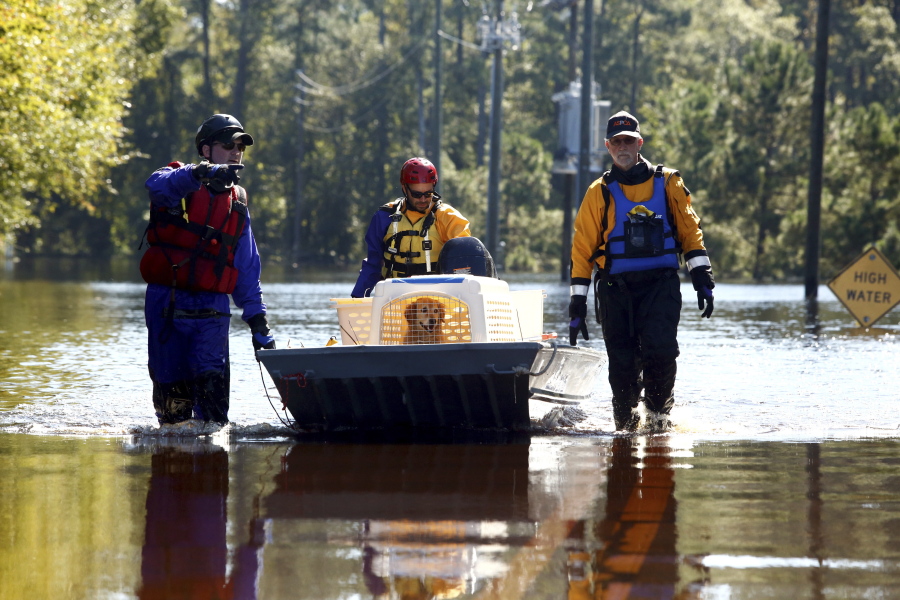TARBORO, N.C. — Amanda Brown clutched a green folder with personal documents while she waited to speak to a FEMA representative along the banks of the river threatening to inundate her town.
She lives in Princeville, a historic town of about 2,000 that’s considered one of the oldest chartered by blacks in the U.S. It was devastated in 1999 after Hurricane Floyd’s torrential rains, and it has started flooding again after Hurricane Matthew.
Officials said water was flowing around a dike that protects the town, and aerial photos from Thursday show brown water surrounding many of homes and buildings. Still, forecasters and authorities are hopeful the river level will fall before causing a failure of the dike.
Brown and her fianc?, David Corey, fear the worst for the mobile home where they live with their 7-year-old son.
“The water didn’t come up till a day ago. We’ve been watching: No water in Princeville, no water in Princeville. Now, it’s coming,” she said, standing about 100 yards from an orange High Water sign and a cluster of law enforcement vehicles blocking a bridge into Princeville.
They don’t have flood or renters’ insurance, so they’re hoping FEMA can reimburse them for clothes or food or hotel accommodations.
At a news conference Thursday afternoon, North Carolina Gov. Pat McCrory said Princeville was under water.
“We’re going to have a lot of work to do,” McCrory said. “We’re going to have to rebuild a town.”
The flooding triggered by heavy rain from Matthew — which killed more than 500 people in Haiti — has left at least 38 dead in the U.S.
McCrory said the number of power outages was down to about 55,000, from a high of nearly 900,000 when the storm hit last week. He reported the death toll climbed to 22.
But McCrory said flooding continues to be a major problem in poor areas in the eastern part of the state.
Theodore Rowe moved from Princeville to the outskirts of nearby Tarboro after Floyd hit in 1999. He said his current neighborhood hasn’t flooded, and he came down to the river to see how high it had risen.
“I used to live in Princeville when Floyd came. That’s why I left. I said I’d had enough of it,” said the retired U.S. Marine Corps drill sergeant who has lived in the area for about 30 years. “The last time this happened, it was two weeks before we could get back. When we got back, the house had made a 180-degree turn. It faced the street, but when we went back, the back of it was facing the street.”
Floyd roared ashore on Sept. 15, 1999, not long after another hurricane saturated the state. Two days later, the rising Tar River engulfed Princeville in water that was 20 feet deep near the town hall.
Princeville’s history as one of the country’s first towns created by freed slaves in 1865 helped boost a rebuilding effort. The Federal Emergency Management Agency gave $26 million to Princeville’s residents and another $1.5 million to the town.



